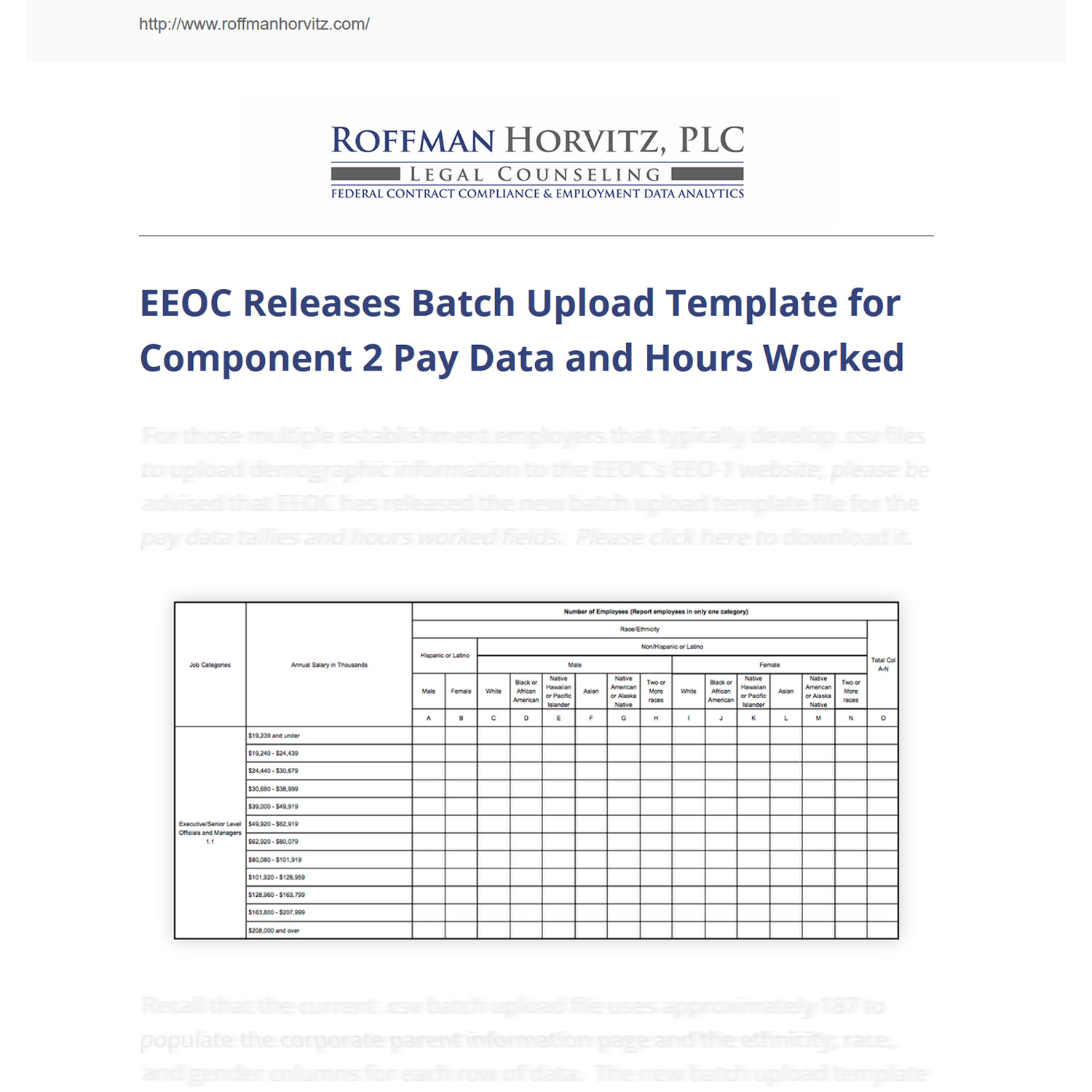Administrative Law Judge Dismisses OFCCP Pay Discrimination Claims Against Analogic.

On March 22, 2019, U.S. Department of Labor Administrative Law Judge Coleen A. Geraghty ruled against the OFCCP in an enforcement action it brought against Analogic. The decision provides insight into what factors the OFCCP and contractors must consider when analyzing alleged pay discrimination. The decision represents a curtailment of the OFCCP’s ability to claim that a statistical disparity in pay is caused by discrimination, without considering the individual elements and application of a contractor’s compensation system.
Analogic
Analogic is a developer and manufacturer of resonance and imaging technology for the security and medical fields. In its manufacturing plants, Analogic employs assemblers who perform routine and repetitive production, assembly, and subassembly tasks. Assemblers are divided into four levels, Assembler 1-4, which require more experience and pay higher salaries as the level increases. Analogic’s compensation system increases employee’s wages each year based on a pay matrix.
Procedural Background
The OFCCP conducted a compliance review of pay data for Analogic’s main manufacturing facility for the years of 2011 and 2012. OFCCP issued a Notice of Violations on January 17, 2014, advising Analogic that there had been a finding of pay discrimination in Assembler 2 and Assembler 3 positions. The OFCCP then issued an original Show Cause Notice (SCN) on December 24, 2014, an amended SCN on July 17, 2015, and it initiated an enforcement action by filing an administrative Complaint on October 30, 2016. The complaint alleged that Analogic had engaged in gender-based pay discrimination against female employees in Assembler 2 and 3 positions during the audit period, claiming both disparate impact and a pattern or practice of disparate treatment. The complaint also alleged that the pay discrimination had continued through 2016 to the extent that the past discrimination had not been remedied.
The Salient Points of the ALJ’s Decision
1. Disparate impact
To support a claim of disparate impact, the OFCCP must show a statistical disparity in pay and identify a facially neutral policy or practice that causes the disparity. An exception to this rule allows the OFCCP to analyze a compensation system as a single policy if the elements considered in the process of setting pay are not separable for individual analysis. The scope of the dispute concerned only how pay was adjusted after an employee had been placed into his or her current position, not how pay was determined for new hires. Analogic awards its employees yearly pay raises based on a pay matrix that examines two factors. The first factor looks at the range of wages paid for a position, and then determines which quartile the employee’s pay was in during the previous year. The second factor is the rating given to the employee on his or her yearly performance reviews. Based on these two factors, a pay matrix specifies the amount an employee’s wage should be increased.
- Whether factors considered in a compensation system are separable
OFCCP claimed that it could not separate the factors that Analogic used in increasing pay and advocated for the ALJ to evaluate liability under a single policy disparate impact theory. The ALJ rejected the OFCCPs assertion that elements of a compensation system were inseparable just because both subjective and objective elements were considered. The OFCCP did not introduce evidence to demonstrate that the given matrix factors were not actually used in pay decisions, that the weight ascribed to the factors was unclear or discretionary, or that any other factors were considered in the compensation system. Instead, the OFCCP alleged that performance reviews were a subjective element, opening the door for bias in the final decisions under the compensation system. Regardless of whether determinations of performance ratings were subjective, the weight of the rating was clearly established by the matrix, and therefore the impact of ratings on the final pay decision could be separately analyzed. The ALJ found that the presence of subjective factors in the compensation system, on its own, was insufficient evidence to show that the individual elements were incapable of separation for analysis.
- Pay equity analysis
The ALJ then determined that even if the compensation system was viewed as a single policy, the statistical evidence presented by the OFCCP did not convincingly support a claim of disparate impact. The OFCCP used an “Oaxaca” model, that was designed to predict what females would have been paid if they were males, based on relevant characteristics. While noting that the model made some theoretical sense, the ALJ was not convinced that the type of predictive model employed by the OFCCP was widely accepted or used in the workplace discrimination context.
The ALJ also disfavored OFCCP’s model because it included variables or relevant characteristics affecting pay that were not considered by the Analogic compensation system. The model found that males and females were paid similar wages, but predicted that female wages should be higher based on higher average total tenure. The OFCCP disregarded intermittent periods of non-employment when calculating tenure based on the theoretical effect of total tenure on productive output and wages. But, total tenure was not a variable Analogic considered in its compensation system, since wages increases did not carry over between separate periods of employment. The inclusion of total tenure disregarded Analogic’s use of the pay matrix to increase wages, which only looked to pay from the previous year.
The ALJ found Analogic’s multiple regression model was both more commonly used in discrimination cases, and consistent with OFCCP guidelines. The multiple regression model controlled for characteristics that would affect pay under the pay matrix, then determined whether gender had a statistically significant impact on pay. Unlike the OFCCP model, Analogic’s model was descriptive, looking at actual differences in pay between males and females during the audit period and subsequent years.
2. Disparate Treatment
The OFCCP also alleged that Analogic engaged in a pattern or practice of intentional discrimination against female assemblers under a disparate treatment theory. To support a claim that Analogic engaged in a pattern or practice of wage discrimination, there must be evidence of a statistical disparity in pay, and anecdotal evidence suggesting that discrimination against females was intentional. Intent can also be inferred without anecdotal evidence if the OFCCP shows there is a gross statistical disparity.
The OFCCP first provided anecdotal evidence through the testimonies of two female assemblers. The first witness provided her opinion that managers were chauvinistic, but did not refer to any specific conduct. The second witness stated that her manager disrespected her, but did not claim it was related to her gender. This testimony was insufficient, on its own, to support a claim of intentional discrimination.
The OFCCP also produced anecdotal evidence to claim that the subjectivity and lack of clarity in performance reviews allowed supervisors’ discretion to incorporate gender-bias into pay decisions. This claim failed because, regardless of the subjectivity of the performance review system, the differences in performance reviews between males and females were negligible. A policy that is subjective or lacks clarity, unaccompanied by evidence that the subjectivity or lack of clarity resulted in a biased application of the policy, cannot support a claim of disparate treatment.
The statistical disparity in pay of 2.84 standard deviations presented by the OFCCP was statistically significant, but did not rise to the level of a gross disparity. Because the difference in pay was not a gross disparity supporting an inference of intentional discrimination on its own, and the OFCCP failed to produce anecdotal evidence, the ALJ rejected the OFCCP’s disparate treatment claims.
Conclusion
The claims by the OFCCP signal an aggressive approach to pay equity analysis and highlight the importance of a clearly defined compensation policy. In both the disparate impact and disparate treatment claims, the OFCCP focused on the use of a subjective factor in the compensation system to explain how pay disparities alone led to an inference of discrimination. Because Analogic had clearly defined the weight of the factors considered in compensation decisions, the OFCCP was required to identify a specific factor or policy that had caused the disparity, which it was unable to do. The OFCCP model showing disparity in pay was also more easily rebuttable, because Analogic could show that tenure was not a factor in its matrix, and therefore not relevant to the pay equity analysis.
Download PDF of Client Update
